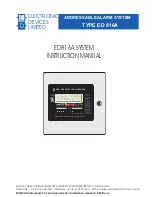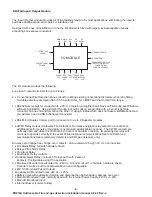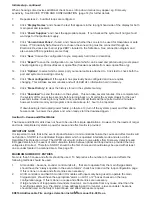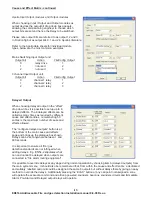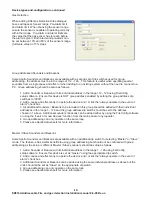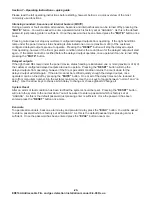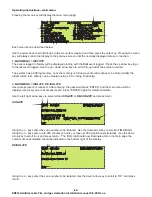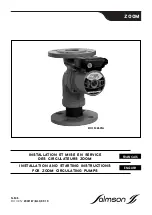
System design guidelines - continued
LOOP CABLE CAPACITANCE
SCREEN CONTINUITY
REPEATER CABLE SELECTION
POWER SUPPLY
Cable capacitance is an important consideration when choosing loop cable.
The maximum permissible capacitance is 0.5uF (500nF) between loop + and loop -.
As each loop is electrically isolated therefore high loop to screen capacitance does not normally cause a
problem and should not be the limiting factor for loop lengths.
Typical capacitance per 100m (FP200 / FireTuf)
Core diameter
core to core
core to screen
1.0mm
10nF
17.5nF
1.5mm
12nF
20.5nF
2.5mm
13nF
24.0nF
It is vital, for correct and trouble free operation, that the screen is continuous along the full loop length. Ensure
that the screen connection is continued at each loop device. The screen should be earthed at one end only, via
the control panel, and never at loop devices.
All cables entering the control unit should be screened and ferrite sleeves, supplied with the control unit, must
be used. All screens should be terminated at the control panel only thereby avoiding earth loops.
See page 9 for connection diagram.
Note the repeater data cable screens must NOT be connected to the enclosure (earth) and instead connected
to the terminals marked SCRN inside the control unit and repeater units.
The repeater communicates with the control panel using the industry standard RS485 full duplex.
The data cable used should be 2 conductor (twisted) 124 Ohm twinixial 25 AWG (0.16 sq mm) with foil screen
and drain wire. E.g. Beldon 9271 006 (BLULT).
Repeaters can be powered locally to avoid running additional power cables or they can be powered from the
control unit using the fused output terminals. Up to 8 repeaters can be connected to each system, however if
powered from the control panel the repeater current consumption should be included in power supply and
battery calculations.
Each repeater can operate from 18 - 30Vdc with a worst case current consumption of 350mA.
See page 10 for connection diagram.
The control unit requires a nominal 24V dc supply and must always have batteries connected. Normally the AC
mains is connected to the AC mains input terminals and the AC mains output terminals are wired to the external
power supply. The power supplies DC output is connected to the systems main DC input terminals.
Auxiliary DC input terminals are provided as an additional option. The DC input and Auxiliary (if used) must be
suitably rated to charge the internal batteries.
All power supply cables must be screened and ferrite rings used and cables should not be routed near EMC
generating equipment, radio transmitters, paging systems etc., See page 9.
-8-
ED816A Addressable Fire and gas detection Installation manual 8-9-08 Rev-a

